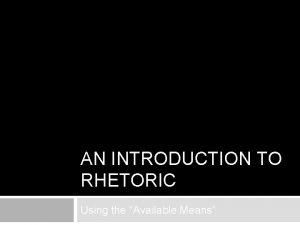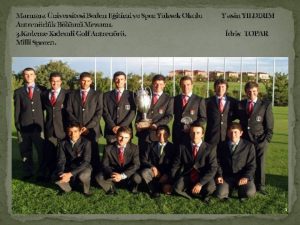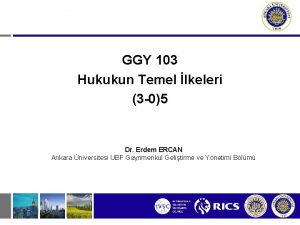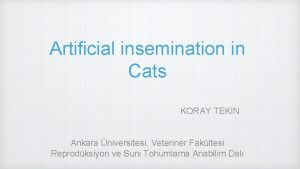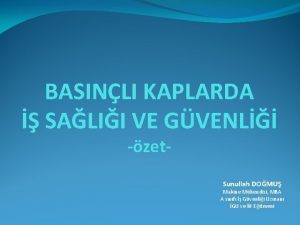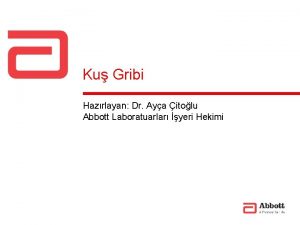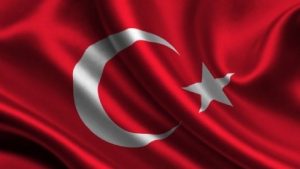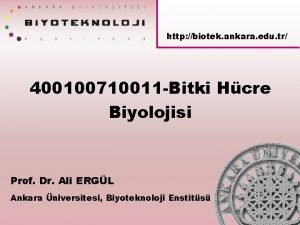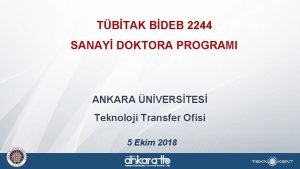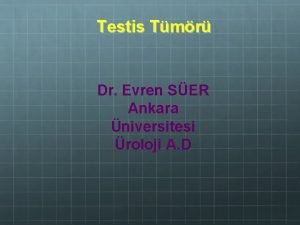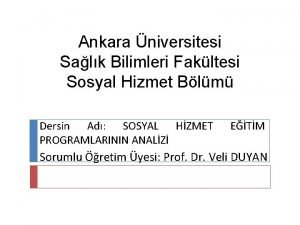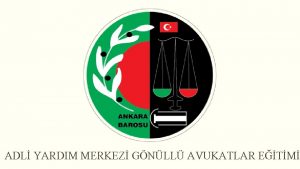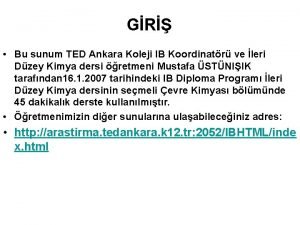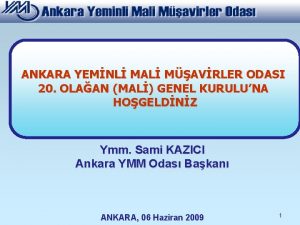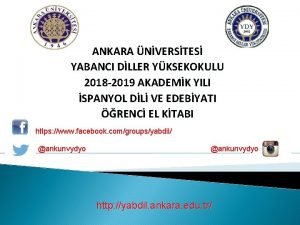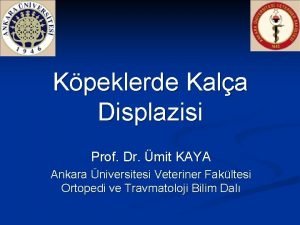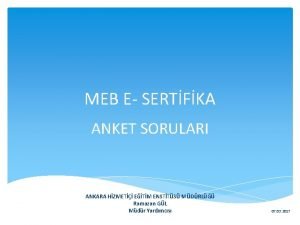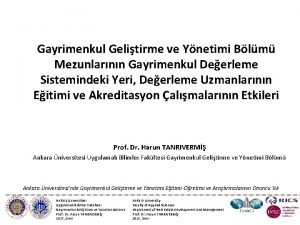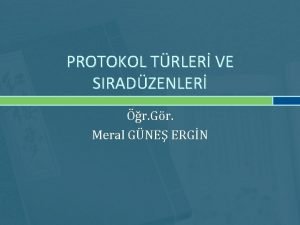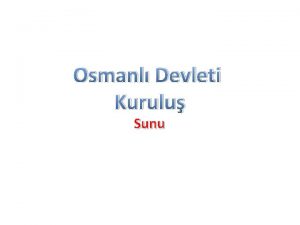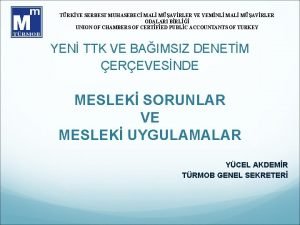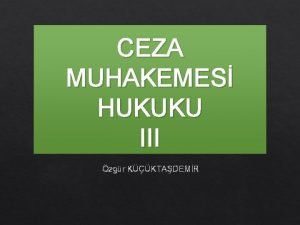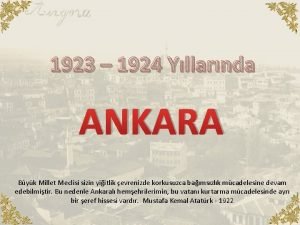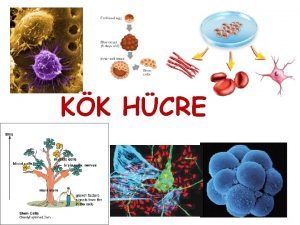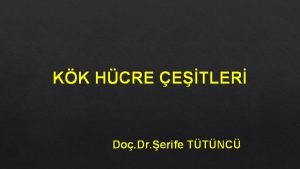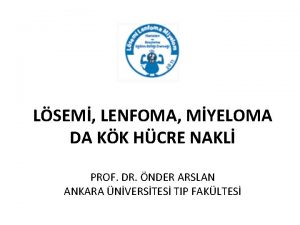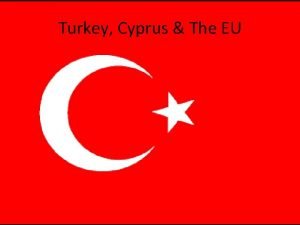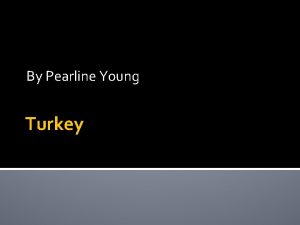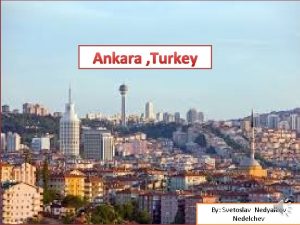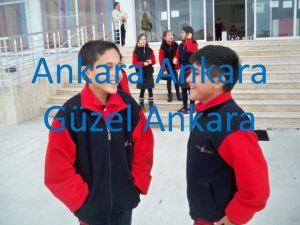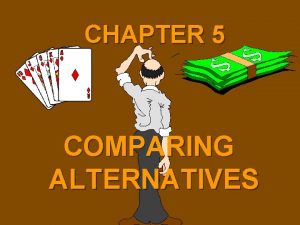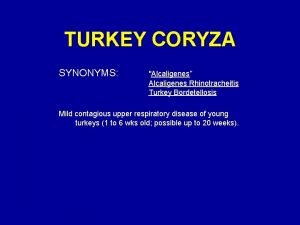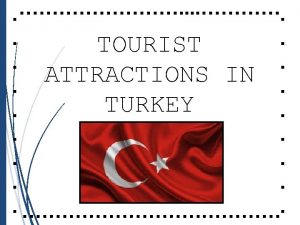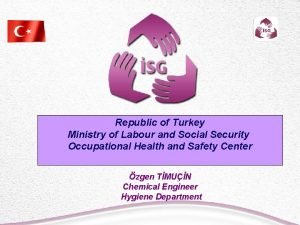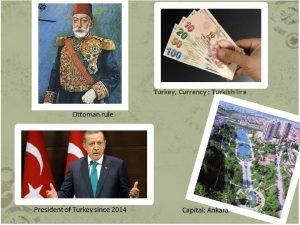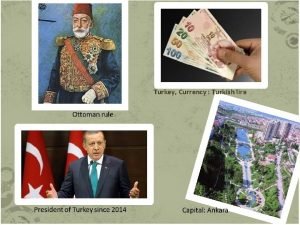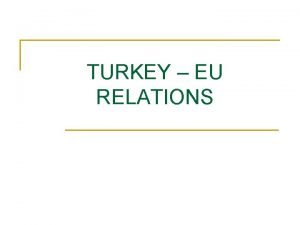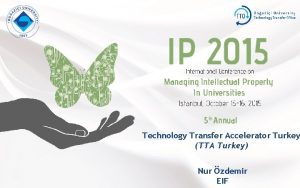Alternatives 2007 Ankara Turkey Introducing alternatives to using





























- Slides: 29

Alternatives 2007 Ankara, Turkey Introducing alternatives to using animals in teaching in Balkan universities Zvezdana Kojic, Marina Djelic School of Medicine, University of Belgrade 1

Belgrade, Medicine, Physiology laboratory classes • • • 2002: - many problems… - we started introducing computer-based alternatives … staged process … - 2003: weekly regular staff meetings, 2004: “electronic room”, 2005: Lab Textbook, 2006: Annual award of School of Medicine for improvement of teaching. resulting in significant savings in the number of animals used in teaching - 2003/04: 600 frogs, 195 mammals - 2004/05: 0 frogs, 30 mammals Estimated animal use still was high: - other parts of Belgrade University: >1000 animals/year, - Balkan University sector: ~ 40, 000 animals/year Background in applying for funding from LDF. Support: - Serbian Physiological Society - Serbian Pharmacological Society 2

The Lord Dowding Fund for Humane Research • Aims: to significantly reduce the number of animals used in teaching physiology and pharmacology in some of Balkan universities by supporting the introduction of computer-based alternatives into the curricula. Project deliverables 1. A staff-development workshop in Belgrade (Sept. 2006) 2. A range of 17 computer-based alternatives, supplied by Sheffield Bio. Science Programs (www. sheffbp. co. uk), to be freely distributed to teachers 3. A follow up report on the impact of the project approximately 1 year after the workshop 4. A written project report 3

Project participans committed to: • try to implement at least one of the alternatives into their teaching in the next academic year. • Questionnaires about: 1. the use of animals in education 2. awareness of e-learning initiatives 3. current use of alternatives 4. possible reasons why alternatives were not currently being used. 4

Photos taken during workshop: introducing lesson 5

Photos taken during workshop: practical work 6

Photos taken during workshop: practical work 7

Questionnaire At the end of Project: we gather data by mails and telephone interviews. 8

Project participants Sept. 2006: n=22 13 Serbian Institutes 9 non-Serbian Institutes. Sept. 2007: n=34 20 Serbian Institutes 14 non-Serbian Institutes 9

RESULTS September 2006. 1. 1. The use of animals in education 10

Data from the questionnaire + telephone interview (Institutes, n =29) For 5 additional Institutes we gathered data about use of alternatives, but no data for animal use. For 6 of the Institutes we surveyed we received pre-2006 data but not post-2006 data and so eliminated these from the study (Institutes, n=23) 3 Institutes (Physiology - Belgrade, Pharmacology – Nis) reduced animals use even before LDF – workshop. Their data have also been removed from the study (Institutes, n=20) * * Important for evaluation of reduction in animal use attributed to LDF - workshop 11

1. 1. The use of animals in education Number of Institutes using different animal species in teaching 12

Use of different tissue preparations in practical classes A high proportion (19) of the 22 participants reported that they used tissue preparations. Isolated nerve, muscle and heart preparations are most common. 13

1. 2. Awareness of e-learning initiatives Most teachers in this study were unaware of e-learning initiatives such as: • the Global Learning Consortium (36%) or • the Open Knowledge Initiative (32%), and none of the institutes were actively using course management tools such as virtual/managed learning environments. 14

Institutes who were aware of information sources about the use of alternatives in education 15

1. 3. Use of alternatives A large majority felt: 1. that computer-assisted learning (CAL) offers distinct advantages over traditional teaching methods, 2. that alternatives could achieve many of the learning objectives of practical classes – good method for students, and 3. that their use would lead to improvements in teaching methods – good method for professors. 16

1. 3. Use of alternatives 4. CAL offers possibility of demonstrating phenomena that are normally unobservable in the equivalent animal experiment such as animation of dynamic physiological processes and anatomical “fly-throughs” of organ systems. 5. use of alternatives can avoid the negative learning experience of an “unsuccessful experiment”. 6. Animal-free models have several advantages over animal experiments: a specific animal experiment might only be offered once, whereas an alternative model can often be use over and over again, without constraints on time and place of study. 17

1. 4. Reasons for not using alternatives in teaching 18

RESULTS Following workshop, one year later … September 2007. Impact of the Project 19

Reduction in animal use attributed to LDF – workshop (Institutes, n=20) 20

Alternative used in 34 Balkan’s Universities Institutes 21

Alternative use in 34 Balkan’s Universities Institutes n -number of Institute 22

Summary • Significant reduction in animal use across Balkan Universities has been achieved. • …how much of the reduction is directly attributable to the workshop? • Besides SBP programs many other programmes (alternatives) have been implemented. • Some universities – still have bad facilities for using alternatives. • Most of the universities for their practical classes practiced both methods, alternatives and life animal experiments. … thank you. 23

24

25

26

* 27

28

Total reduction in animal use, not attributed to LDF workshop Comments: These numbers are not completely correct because for 6 institutes we received pre-2006 data but not post-2006 data and so eliminated these from the study (Institutes, n=23). Comments: These numbers are completely correct because for all included institutes real actuale situation has been presented-feedback information have been received. 29
 An introduction to rhetoric using the available means
An introduction to rhetoric using the available means Ankara golf sahası
Ankara golf sahası Dr erdem ercan
Dr erdem ercan Ankara niversitesi
Ankara niversitesi Ankara paratoner raporu
Ankara paratoner raporu Itola nedir
Itola nedir Turkey capital of the world
Turkey capital of the world Sentroiller
Sentroiller Ankara üniversitesi
Ankara üniversitesi Dr evren süer
Dr evren süer Hacettepe harf notu karşılığı
Hacettepe harf notu karşılığı Coccolithophorid
Coccolithophorid Ankara barosu adli yardım yönergesi
Ankara barosu adli yardım yönergesi Koordinatr
Koordinatr ömer ergenç ymm
ömer ergenç ymm Ankara yabdil
Ankara yabdil Ankara üniversitesi veteriner fakültesi
Ankara üniversitesi veteriner fakültesi Dogm meb gov tr anket
Dogm meb gov tr anket Ubf ankara
Ubf ankara Büyükelçilik protokol sıra düzeni
Büyükelçilik protokol sıra düzeni çirmen savaşı
çirmen savaşı Ankara ymm odası
Ankara ymm odası Ankara batı adliyesi yargı çevresi
Ankara batı adliyesi yargı çevresi Ankara istasyon caddesi
Ankara istasyon caddesi Eee ankara
Eee ankara Ankara kordon kanı
Ankara kordon kanı Ankara niversitesi
Ankara niversitesi Mezenkimal kök hücre
Mezenkimal kök hücre Ankara kordon kanı
Ankara kordon kanı Ankara niversitesi
Ankara niversitesi
